|
In This Update . . .
MASSACHUSETTS BECOMES FIRST STATE TO AWARD SOCIAL IMPACT BONDS TO END CHRONIC HOMELESSNESS THROUGH PRIVATE INVESTMENT IN MEASURABLE OUTCOMES
NEW YORK CITY BECOMES FIRST IN NATION TO BRING SOCIAL IMPACT BONDS TO LOCAL GOVERNMENT
CHATTANOOGA, TENNESSEE CONTINUES RECORD OF RESULTS AND REFOCUSES ON PRIVATE AND PHILANTHROPIC INVESTMENT
SAN BERNARDINO EXPANDS FOCUS ON SOLUTIONS FOR REENTRY POPULATION AND RESULTS IN EMPLOYMENT AND HOUSING
FIRST YEAR RESULTS OF MERCED COUNTY, CALIFORNIA TEN YEAR PLAN ARE ANNOUNCED WITH NEW PERMANENT SUPPORTIVE HOUSING RESOURCES TO END CHRONIC HOMELESSNESS |
|
|
|
|
MASSACHUSETTS BECOMES FIRST STATE TO AWARD SOCIAL IMPACT BONDS TO END CHRONIC HOMELESSNESS THROUGH PRIVATE INVESTMENT IN MEASURABLE OUTCOMES
The Commonwealth of Massachusetts last week again demonstrated leadership in ending homelessness with the award of the nation's first Social Impact Bonds (SIB) targeted for homelessness to the Massachusetts Housing and Shelter Alliance (MHSA). The "pay for success" contract will offer resources to scale permanent supportive housing targeted to chronically homeless individuals and reduce public costs and shelter use.
"MHSA has long advocated for the replication of outcome-based strategies to end homelessness," said Joe Finn, Executive Director of MHSA. "All of us are excited for the opportunity to bring permanent supportive housing solutions to scale for some of the poorest and most disabled persons in the Commonwealth." MHSA, a statewide advocacy alliance of more than 90 community-based agencies, will partner with the Corporation for Supportive Housing (CSH), Third Sector Capital Partners, and the United Way of Massachusetts Bay and Merrimack Valley to reduce chronic homelessness in Massachusetts.
Round Table President Philip Mangano, the Founding Executive Director of MHSA prior to his seven years as Executive Director of the U.S. Interagency Council on Homelessness, applauded the announcement by the Commonwealth's budget office, the Executive Office for Administration and Finance (A&F). Mangano noted MHSA's long record of encouraging private sector investment in solutions and its lessons for his work at the Council, encouraging the adoption of performance metrics and business partnerships.
"The SIB award to MHSA is the first in the world targeted to homeless people. It mobilizes private capital to scale our cost effective, evidence based housing innovations," indicated Mangano. "The Round Table is proud to have served as a consultant to MHSA through the process. All of us owe a debt of gratitude to MHSA's convening of a robust partnership and are indebted to Social Finance US, who seeded this innovative idea in Massachusetts, building on their involvement in the UK pilot. "
Mangano further stated: "MHSA positioned itself to be primary mover of this initiative through the success of Home & Healthy for Good and especially through cost benefit analysis that included a study by Medicaid that demonstrated public savings through ending homelessness."
"SIB is one of those 'Next Practice' initiatives that take us beyond a status quo that ordains business as usual as the best that we can do," indicated Mangano. "In providing the mechanism and rationale for private capital investment, SIB's evolve current government and philanthropic funding to include private sector investment. We have been waiting for this vehicle ever since Sam Tsemberis' Housing First innovation and our federal Chronic Homelessness Initiative a decade ago confirmed Housing First as an evidence based practice and opened the doors to incentivizing investment in housing solutions. MHSA and the state now build on that past legacy with the 'next' scaling phase. "
In the first SIB model, now being implemented in the United Kingdom for the reentry population, private capital, applied through an intermediary entity, steps in to create new measurable outcomes, using basic business principles and practices like performance, innovation, outcomes and, most importantly, Return On Investment (ROI). Government only pays if a quantifiable goal is met. The idea combines private investment/risk, innovative/cost effective solutions, and government as guarantor only if success is achieved. Massachusetts also awarded a Social Impact Bond to support youth aging out of the juvenile justice and probation systems to improve successful transitions to adulthood. This contract will be designed with the specific goal of reducing recidivism and improving education and employment outcomes.
Through the social innovation financing contract under negotiation, MHSA and its partners plan to expand MHSA's Home & Healthy for Good (HHG) low-threshold housing initiative. HHG has demonstrated that the often traumatic and undertreated health conditions of chronically homeless individuals are better treated after a person gains the stabilization of permanent housing. In addition to success in housing those often considered the hardest to serve, HHG has demonstrated significant cost savings to the Commonwealth.
A&F has started negotiations, and hopes to enter into final SIB contracts this fall. The Legislature passed a bill to establish a mechanism for the state to fund the SIB initiative, and it was signed into law in July.
|
|
NEW YORK CITY BECOMES FIRST IN NATION TO BRING SOCIAL IMPACT BONDS TO LOCAL GOVERNMENT
New York City Mayor Michael Bloomberg announced last week that the innovation of Social Impact Bonds (SIB), being tested in the UK and just announced in Massachusetts, will be adopted in New York City to reduce recidivism rates of adolescent males. Goldman Sachs will invest nearly $10 million in a Rikers Island jail program targeted to a 4-year initiative to decreasing reoffending. About 50 percent of the target group currently reoffends within one year.
Goldman Sachs will pay MDRC, a social services provider, to develop the initiative with a goal of reducing recidivism by 10 percent. If successful, Goldman could be paid its original investment, and if outcomes are shown to exceed 10 percent, Goldman could realize up to $2.1 million in profit. If the recidivism rate fails to meet the 10 percent target, Goldman's loss could be up to $2.4 million.
"This promising financing model has potential to transform the way governments around the country fund social programs, and as first in the nation to launch it, we are anxious to see how this bold road map for innovation works," Mr. Bloomberg said in a statement. "Social impact bonds have potential upside for investors," he added, "but citizens and taxpayers stand to be the biggest beneficiaries."
New York City's initiative will be unique in drawing on the private dollars that the Mayor himself will invest from his personal foundation, Bloomberg Philanthropies. A $7.2 million loan guarantee to MDRC will come from the foundation and will be used to repay Goldman a portion of its loan if the target is not reached. If the initiative is successful Goldman will be paid by the city's Department of Correction.
|
|
CHATTANOOGA, TENNESSEE CONTINUES RECORD OF RESULTS AND REFOCUSES ON PRIVATE AND PHILANTHROPIC INVESTMENT
The record of Chattanooga, Tennessee since the inception of its Ten Year Plan to End Chronic Homelessness in 2003 is a litany of the vernacular that has changed the standard of expectation on the issue of homelessness from managing homelessness to ending the disgrace: political will (the commitment of then-Mayor, now Senator Bob Corker and Mayor Ron Littlefield), partnership (the City of Chattanooga and the Chattanooga Regional Homeless Coalition), business planning (the mayorally-led 2003 Blueprint to End Chronic Homelessness and its subsequent recalibration), investment in the then-new innovation of Housing First (winning a first-ever award in the 2003 federal Collaborative Initiative to End Chronic Homelessness and subsequently the federal Serial Inebriate Program housing initiative), adoption of innovations (Project Homeless Connect), and - most importantly - quantifiable results.
Chattanooga's results, which form a fabric with communities across the nation that have sustained decreases over the last decade, most recently reveal a Point-in-Time count showing for a 90% reduction in chronic homelessness since 2003. The total number of people experiencing homelessness in Chattanooga has been cut by half, and 2,987 people have been housed since 2003, exceeding the original goal of 1,400.
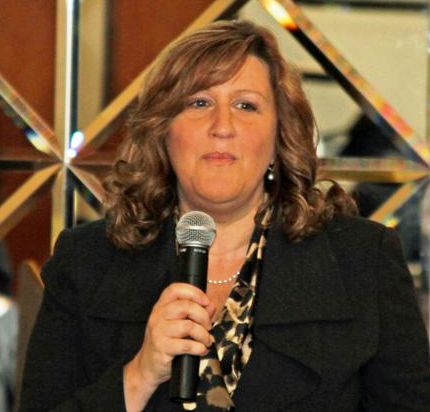 To solidify these documented results and continue progress, the Chattanooga Regional Homeless Coalition, led by Mary Simons (pictured here), convened a forum for local and regional philanthropies to learn more about what's working to end homelessness and how collaborative funding strategies can contribute to results. To solidify these documented results and continue progress, the Chattanooga Regional Homeless Coalition, led by Mary Simons (pictured here), convened a forum for local and regional philanthropies to learn more about what's working to end homelessness and how collaborative funding strategies can contribute to results.
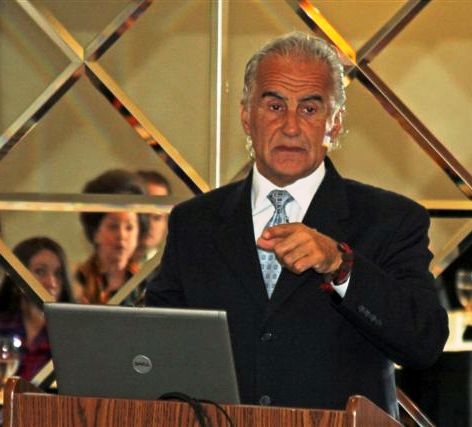 Round Table President Mangano (pictured here), invited to open the session, joined Anne Miskey of Funders Together to End Homelessness to discuss collaborative funder responses in other communities and how the approach has been successful. Mangano indicated to the partners: "All of the elements of Chattanooga's Plan, all of these strategies are aligned with the one, single metric we're interested in achieving. That metric is that the numbers of those suffering from the long misery of homelessness, from the human tragedy of not having a place to live go down. " Ms. Miskey is pictured here at right with Autumn Mason of the Coalition. Round Table President Mangano (pictured here), invited to open the session, joined Anne Miskey of Funders Together to End Homelessness to discuss collaborative funder responses in other communities and how the approach has been successful. Mangano indicated to the partners: "All of the elements of Chattanooga's Plan, all of these strategies are aligned with the one, single metric we're interested in achieving. That metric is that the numbers of those suffering from the long misery of homelessness, from the human tragedy of not having a place to live go down. " Ms. Miskey is pictured here at right with Autumn Mason of the Coalition. 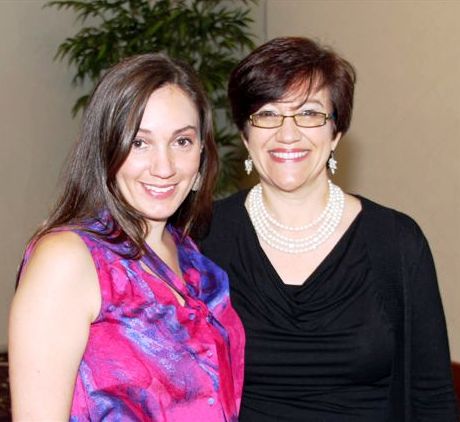
Business leader and philanthropist Stephen Culp of causeway.org described the business community's interest/response, and State Senator Andy Berke spoke about the State's response. Board members of local programs, including the HUD-VASH initiative, the City of Chattanooga, Hamilton County, and local foundations, including the Maclellan Family Foundations, participated.
Pictured here are Donna Maddox of Volunteer Behavioral Health Care and Richard Beeland, Media Relations Director for the City of Chattanooga. 
While in Tennessee, Mr. Mangano also met with regional leaders of the Volunteer State Health Plan in Chattanooga and Nashville, as well as with TennCare Director Darin Gordon to discuss opportunities to adopt Medicaid related innovations targeted to people experiencing chronic homelessness and stabilizing them in permanent supported housing.
|
SAN BERNARDINO EXPANDS FOCUS ON SOLUTIONS FOR REENTRY POPULATION AND RESULTS IN EMPLOYMENT AND HOUSING
San Bernardino County, California, building on a March 2012 Interagency Council on Homelessness convening to hear from Round Table President Philip Mangano on innovations, took another key step in its Ten Year Planning to End Chronic Homelessness with a working meeting convened by Josie Gonzales, Chair and Fifth District Supervisor, San Bernardino County Board of Supervisors and leader of the Ten Year Plan.
Partners from county agencies focused on homelessness, corrections, workforce, housing, probation, public health, and behavioral health, many of which are members of the San Bernardino County Reentry Collaborative (SBCRC), met to forward next steps in addressing the needs of the community and the increased number of parolees in the county as a result of the realignment of California's state corrections system. Tom Hernandez, County Homeless Services Manager, was present with Dr. Joe Colletti of Urban Initiatives, who wrote the county plan.
Partners discussed investment resources and collaborations needed and available to replicate the Ready, Willing & Able strategy of housing and employment for individuals with complex histories of homelessness, incarceration, and addiction.
Noted Mangano, who met individually and in collaboration with more than two dozen agency representatives, "Once again, the commitment of Supervisor Gonzales, who has led elected officials in the county in re-examining the issue of homelessness, brings partners to the table to forward new solutions."

According to Mangano, "The Doe Fund's Ready, Willing & Able employment and housing initiative is targeted to those 98% of all who are incarcerated and released. When they get out they aspire to a place to live and a job. A new awareness of these aspirations is driving policymakers to innovative, results oriented efforts." Mangano is pictured here at the March ICH meeting.
|
|
FIRST YEAR RESULTS OF MERCED COUNTY, CALIFORNIA TEN YEAR PLAN ARE ANNOUNCED WITH NEW PERMANENT SUPPORTIVE HOUSING RESOURCES TO END CHRONIC HOMELESSNESS
"It has been one full year since we, the Merced County Association of Governments Governing Board, adopted the 10-Year Plan to End Homelessness in Merced County. I'm thrilled that we are able to stand here today to applaud all of your efforts." With these congratulations to partners, Merced County Supervisor Hub Walsh launched a full day of events to mark one year of accomplishmen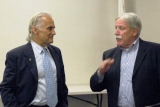 ts under the Merced Ten Year Plan. Supervisor Walsh chairs the Merced County Association of Governments (MCAG). Supervisor Walsh is shown here at right with Round Table President Mangano. ts under the Merced Ten Year Plan. Supervisor Walsh chairs the Merced County Association of Governments (MCAG). Supervisor Walsh is shown here at right with Round Table President Mangano.
Unprecedented new resources have been key to the outcomes announced by the partners. Since the inception of the Plan, over $1,290,000 in U.S. Department of Housing and Urban Development (HUD) resources has been awarded to the Merced community. 58 new housing units have resulted, including 25 HUD-VASH Vouchers; 25 new Permanent Supportive Housing Units; HUD; 8 Shelter Plus Care Certificates; and $20,000 in CDBG resources targeted to Rapid Rehousing.
 American Round Table President Philip Mangano (pictured here), who has partnered with Merced County leaders over the last 2 ½ years, joined Supervisor Walsh, Los Banos Council Member Joe Sousa, and Merced Council Member Bill Blake and other local leaders to announce the results of the new strategy. In 2011 Merced County adopted its new Ten Year Plan to End Homelessness with the vote of the Merced County Association of Governments (MCAG). The Plan embraced a new strategy to implement evidence-based practices, including Housing First. American Round Table President Philip Mangano (pictured here), who has partnered with Merced County leaders over the last 2 ½ years, joined Supervisor Walsh, Los Banos Council Member Joe Sousa, and Merced Council Member Bill Blake and other local leaders to announce the results of the new strategy. In 2011 Merced County adopted its new Ten Year Plan to End Homelessness with the vote of the Merced County Association of Governments (MCAG). The Plan embraced a new strategy to implement evidence-based practices, including Housing First.
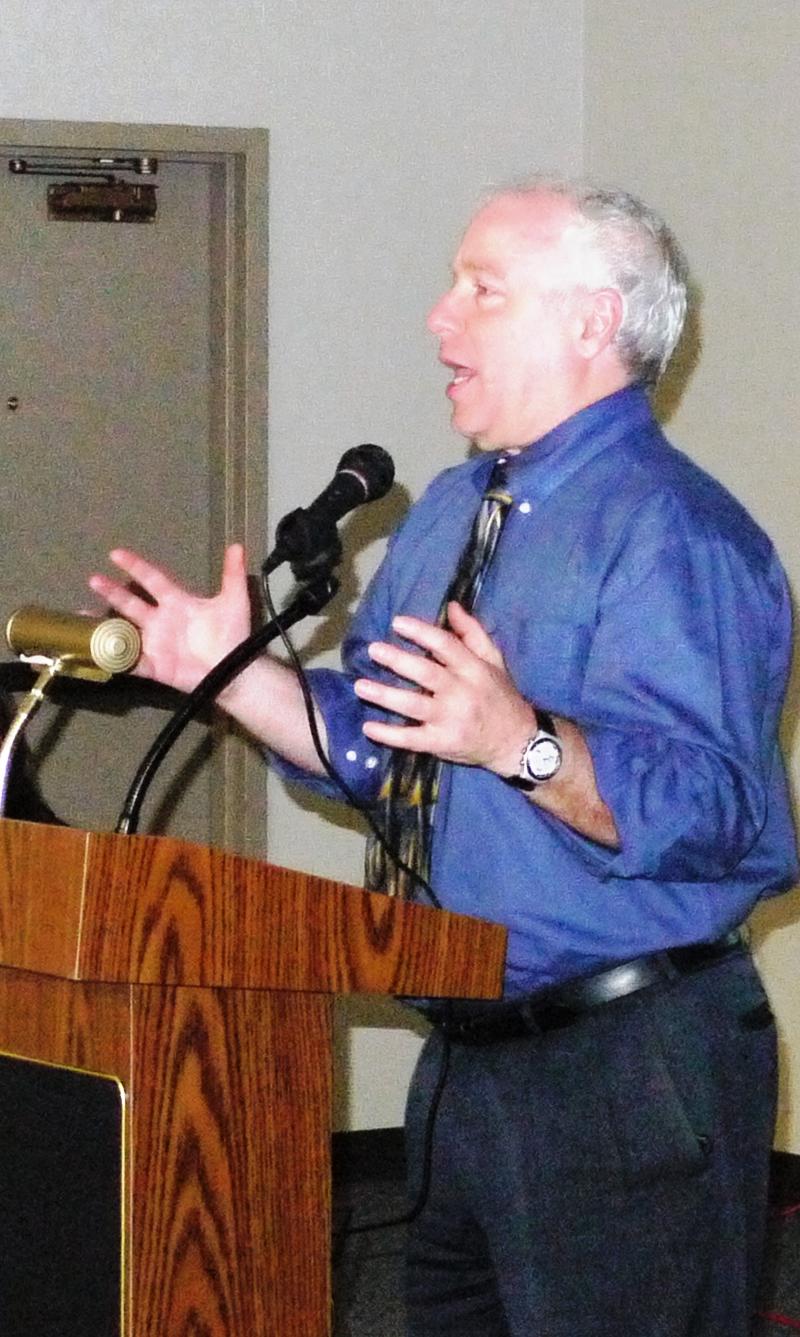 Also present was Dr. Joe Colletti, Founder and CEO of the Institute for Urban Initiatives in Pasadena, who drafted the Plan, coordinated the Point-in-Time count, and has continued to support Merced's funding strategy (pictured here). Dr. Colletti and Dr. Sofia Herrera, of the Institute for Community Psychology at the Institute for Urban Initiatives, were integral to the Merced partnership. MCAG Public Information Officer Lori Flanders, and Continuum Coordinator Alicia Ochoa-Jones were key to the anniversary event. Also present was Dr. Joe Colletti, Founder and CEO of the Institute for Urban Initiatives in Pasadena, who drafted the Plan, coordinated the Point-in-Time count, and has continued to support Merced's funding strategy (pictured here). Dr. Colletti and Dr. Sofia Herrera, of the Institute for Community Psychology at the Institute for Urban Initiatives, were integral to the Merced partnership. MCAG Public Information Officer Lori Flanders, and Continuum Coordinator Alicia Ochoa-Jones were key to the anniversary event.
"The context of this Ten Year Plan started with the fact that Merced was not getting its fair share of federal resources," Mangano told the partners. "There was a clear need to remedy that situation. Local resources were insufficient, and state resources were disappearing. Due to the difficult economic situation in the County, only small investments could be made, and there was a need to make those investments strategically to maximize other resources. With the gathering of political will for the plan, and the gathering of new data, now we can see the results of that commitment and targeted investment for the most vulnerable and for those who have served their country."
|
|
|